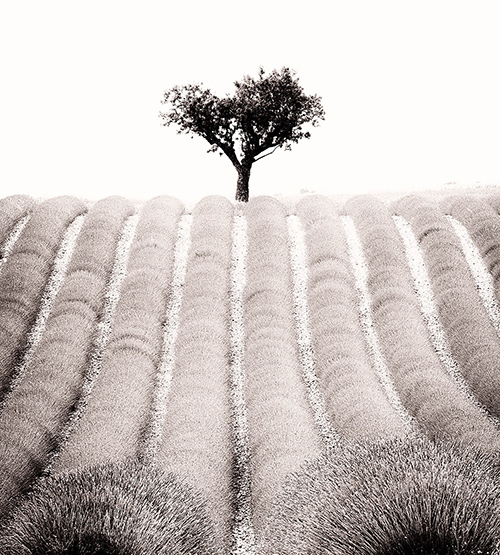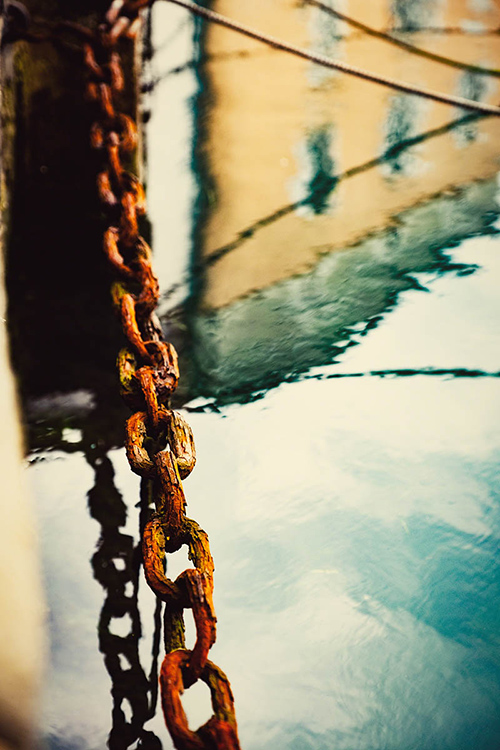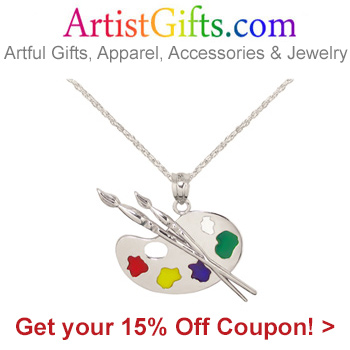by Carolyn Edlund
A recent conversation with photographer/teacher Karen Hutton ranged deeply into understanding and sharing one’s artistic voice, and the opportunity we have to act as cultural visionaries.

“Singularity” photograph by Karen Hutton
AS: What do you mean by the “artist’s voice”?
KH: In the simplest terms, I think of the artist’s “voice” as the stamp of who you are, your point of view; which is declared and expressed palpably throughout your work. It’s like a recognizable signature that broadcasts the imprint of your soul in every piece you create.
It’s like the way you can instantly recognize a good friend’s voice on the phone just from “Hello”, identify them by the way they walk, how they dress or take their coffee. When you find your voice in your art, it can be recognized as yours and yours alone by its unique expression and point of view.
People sometimes ask if it’s the same thing as “style”. I think “voice” and “style” share some similarities, but a style can more easily be identified by certain techniques, themes, subject matters, color palettes; it’s a little easier to point out.
An artistic voice, on the other hand, is like a presence within your work. It strikes an emotional tone, a resonance that is not so easily explained. And yet, it has an attraction, palpability, a life force of its own.
Collectors often fall in love with an artist’s work for reasons they may feel deeply – but are hard-pressed to put it into words, other than “I just love it.” They love the work, but what they really fell in love with was the artist’s “soulprint”. The truth, authenticity and beauty of a unique and exquisite artistic voice, embedded deeply within the very brushstrokes (or pixels) of a person’s art is like a haunting melody that stays with you long after the song has ended.
Here’s what I think is most interesting about the whole concept:
That by fully showing up and creating that which you love beyond measure, being absolutely and unabashedly truthful and authentic about why you are creating it – knowing the idea/feeling/impulse you are giving voice to – and by holding nothing back as your create from that place, your work’s true signature and voice begins to be heard.
What’s more… it has a distinct tendency to work its way into the rest of your life too. That’s the “life as art” genius of it all. After years and years of helping people find their “voice” across multiple disciplines… I’m still in awe of the transformation not just in the art – but in people’s lives, businesses, relationships, self-awareness, perception and pursuit of possibilities. It’s the most amazing one-stop-shop.
That’s the part I love the most.

“Chains of the Past” photography by Karen Hutton
AS: You believe artists should know their “Why” but must go beyond that in creating a brand that resonates with their audience. What do you mean by that?
KH: “Why” opens up a world of wonders all its own. If this concept is new to you and you haven’t read it, check out Simon Sinek’s Start With Why. You’ll get a whole new perspective on the subject, which in turn might just lead you down your own miraculous path of “Why”.
From my perspective, there are layers and levels to “Why”… all of which can lead us to making not just better choices in our art, but better ones in our branding, marketing, and lives. Once you know your Why, you’ve got your compass and can begin building your plans. Without that, it’s tough to hone in, make strong decisions and avoid all the squirrels that will inevitably come your way.
It begins by asking “Why?” of ourselves… but also extends to our audience and potential clients.
1. “Why” on a personal level leads you down a road of clarity. Always useful.
Why is that? Well, first of all, it’s a question. And it just so happens that the mind loves to answer questions and solve problems. It’s hardwired for it. Simply by asking the question “Why?” sets your mind on a path of finding the answers.
By answering questions like; “Why do I love this medium so much?”, “Why is creating art so important to me?”, “What’s my legacy?”, or even something simple like “Why blue and not green?”… you learn more about what’s really driving you and your vision. What purpose you want to serve. How you’d like to do that. The thing is, you have to be so passionate about what you do that it transcends resistance, doubt, and fear – and keeps you focused upon what’s really important.
Knowing your “Why” specifically goes a long way toward removing all distractions. It helps you understand the soul of your own work, and helps you develop a laser-like focus on what drives you and the actions you need to take to make them successful. And if you lose your focus? Your Why will bring you back.
Knowing mine has helped me through some mighty dark days too… and I know I’m not alone in that.

“St. Thomas on the Hill” photography by Karen Hutton
2. Knowing your “Why” in creating a business and brand also helps you identify your ideal clients.
Answering hard questions like: “Why do I want to create a business in the first place?” “Why would anyone be interested in what I offer?” “Who are the people just waiting to discover me and why should they care?” “Who do I need to meet, connect with and reach out to?” leads you to find your people and opportunities. The ones who are just waiting to show up and experience what only you can create.
Hey, I didn’t say it’s easy! But finding those answers not only helps you identify the unique proposition of your business and what makes it so special. It also helps define who your ideal clients are.
3. Finally, asking “Why?” and finding those answers puts you in the driver’s seat as you define and make the myriad of decisions you have to make in any business.
Don’t wait until your work is perfect to get going, because that won’t happen. Just start. Need a new website? Help with writing? More education on marketing? Figure out your “Why” and get busy!
There are a myriad of examples to illustrate this whole idea. But here’s a simple one.
Let’s say you’re deciding whether to use, and/or how much time to spend, on social media. You might start by asking “Why would I want to do that?” Even if everyone says it’s the right thing to do, ask that question anyway. Your answer might be different from “everyone”. If it is, then own it. And move forward from there.
Maybe your first answer is “Because it’s great marketing for my art.” Does that ring true? If not, then ask: “Is it? Why?” or maybe a better question is: “Do I love social media? Why or why not?” Be honest and accept the answer.
If you discover that the very idea of social makes you break out in hives, then maybe it’s not a valid choice for you. Then what about marketing? Well, knowing you’re not going to do it via social, you’ll want to explore ways to market and create obsession in your work differently – yet effectively – that are a better fit for you. They are out there. But it all starts with “Why?”
Knowing your “Why” helps you know what you really want to say, how you really want to show up and serve through your art and in your business. How do you want it all to feel? While you’re at it, think about how you want your life to feel like, too! Heck, you might discover a new intersection between business/branding, art and life that you never thought of before you started asking “Why?”
Going back to who you really are within your art and business, what you truly love and what genuinely floats your boat is key. You might discover all new ways to express your voice to the world and maybe even the legacy you want to leave. Just food for thought.

“Tethered” photography by Karen Hutton
AS: How can artists stay relevant in their work and with their message given the shifting cultural climate?
KH: Everyone has their own way of doing this. Personally, I combine my own internal compass of what I most desire to create, how I want to feel and where I want to go next, with where I see the culture heading. The key is always leading with what you’re most passionate about first, then tying it into the culture. Because no matter what, you are your differentiating factor. If you don’t fully show up because you’re trying to guess “what will sell” then your work gets diluted. You second guess yourself. Creating work that makes you so excited you can hardly stand it, finding the people who desire that, and swan diving into that pool creates a smart business and a sustainable life.
True “how to be relevant” story: I do voiceovers professionally, have for 25 years. One of my very best mentors always said “watch the culture” for previews of how people will be feeling next, needing next, how they’ll be talking to each other and in what tone, etc. Naturally, this advice was skewed toward voiceover professionals… but I find it serves well as an artist too.
The key is always leading with what you’re most passionate about first, then tying it into the culture.
How did we “watch the culture”? For us pro voices, it meant watching the news (and different outlets of it, for perspective), watching commercials, checking out the fashion magazines (particularly fall and spring) all kinds of little and big ways of observing what the culture is doing/thinking/feeling now – to deduce where that’s likely to lead next. Doing it successfully would inform our reads for the next six months, keeping us relevant and on top of our game.
When I started coaching and leading photography retreats based upon “The Artist’s Voice” I did the same type of research. First and foremost, I knew what I wanted to teach. It was all about finding one’s artistic voice, because I knew everything after would come naturally. And that is my passion when it comes to teaching.
But where did it fit within the photo culture? I dug into what/where/how workshops were being led, what people were saying about them, what language was used to promote them, how big the groups were, where people still felt unsatisfied and why… and then… by recognizing that the trend at the time of pushing for “more, more, more” to the point of client exhaustion inevitably meant burnout was on its way. I knew people would be looking for something more thoughtful, nurturing and overall a more creative approach in their learning.
I was right.
Now? Not only did I end up leading awesome retreats in the U.S. and Europe, many photo workshops switched to offering “retreats”, focusing on “finding your voice”, leading smaller groups and moving at a slower pace. I know I lead the pack on that. Why? Because I did my research and knew what all of them were doing when I decided to create my approach. They helped me make that decision, though they didn’t know it. And that’s what we can all do as artists, to determine our ideal audience and what they long for most.

Artist Karen Hutton
Keep in mind that historically, artists have been looked toward for guidance, for inspiration and for something to hang onto, especially in tough times. Perhaps your “Why” is to be a voice for a higher vision – you want to inspire through your art. Then, upon observing the culture for a bit, you determine that right now, people are angry, scared, hopeless, hanging on by thread. Given that – what kind of offering can help? What do people look for when they feel that way? Perhaps something to help them feel calmer, safer, more assured. Suddenly you start thinking about a series in soothing blues and calming greys, for instance. Or maybe you like to write and want to combine that with your art in some way. You dial in what feels amazing, what makes you fist-pump the air with excitement, and then go at it with laser-like focus.
Please understand that I’m not saying you should try to figure out “what will sell” and then create that. You’ll always be behind the wave that way. You have to always create from your own passion and authenticity first and foremost. Then put that to work in service of your ideal audience.
This path is like tuning your own inner radio dial to the station that plays just the right music for the desired mood. Or for the mood you’d like to foster. It’s like having your own little broadcast network that beams awesome, irresistible programming to the people you’d love to serve, hang out with and talk to. It will inform your marketing, your results and your joy.
One final word: working this way often means you seek and discover your own still point, your point of truth, focus, breath – so that your clear voice and message can come through everything you put out there.
When you do it successfully, you’ll stand back and marvel at the beauty of the creative force and its unique superpower of working through you to help create just the right piece/branding/business at the right time. But you do have to get out of your own way. Maybe that means learning how to ground/focus, breathe, meditate. Or by using whatever method you like to set the stage for that to happen.
It’s a very alive process and it grows, shifts and changes with you. It allows you to be flexible, yet focused. And it helps you put your world together in a way that is of service to your exquisite creative muse and to the audience who needs the precise gifts that only you can bring.


I’m so glad I found this article. I’ve been trying to understand what it means to find one’s own voice. How to differentiate my style when thousands of styles essentially look so similar. What attracts attention to your work. Selling art is great but is it the number one reason to want to create art? I would value recognition, appreciation and love of my work. Karen has opene up a new way for me to look at this, finding my voice thing.
At 78 we’ll see if I can do this.
Hey Ken,
First… applause all around for getting skin in the game and going for it! And I’m so glad you found value in these thoughts.
You make such a great point about how “thousands of styles essentially look so similar… what attracts attention to your work.” Because the human race overall looks pretty similar from a distance, doesn’t it?
Differentiating them… and deciding which you want to spend time with happens when you get closer and experience them as individuals. The beauty of the human spirit is so exquisite, each one is a little different. If they’re all behaving in a way that they think will attract your attention… it’s almost confusing! You want to experience their bright light, you want to connect and bond with the ones who speak to your heart. It’s like that with art too, which always resonates the most when it’s an extension of the person – i.e. when their voice sings through their work.
Selling art is a business proposition, and is different set of skills. But the product ALWAYS has to be that unique thing that only you can create. That’s the biggest differentiator, because no one else can do you like you.
I love your question: “ Selling art is great but is it the number one reason to want to create art?“ Because IMO, no it’s not! There is nothing quite like feeling successful at saying – through your art – what is there in your heart. Pull that off to your OWN delight and satisfaction (nevermind anyone else’s opinion) is a feat unto itself – and is such a joy. And what better reason to create ANYTHING, than the sheer joy of it?
This is so timely for me, I started drawing pets and animals but found myself drawn more and more to endangered, rescue and vulnerable wildlife.
I have a history of domestic violence which included being locked up and over time I felt a strong desire to recreate the sentient qualities animals have, my style is a soft pencil style so I can understand my why.
Now I’m not sure if my potential audience are specifically wildlife lovers or people who like wildlife but have had similar personal experiences and how to find out.
Thank you for a really insightful article.
Hi Kay,
Wow, I’m so sorry to hear that you’ve had to endure such experiences. But If there was ever a tribute to the healing power of art, your story is it.
I love that you know your why and are looking for your audience. We never know exactly where we’ll find them, but they’re out there. Searching hashtags like “wildlife art” and anything else you can think of on social – and nosing around Facebooks groups is one way to look. Google searches, gallery searches online are a few others. Once you get in the groove, I’m betting you’ll find your peeps! One door leads to another opening… and so on and on. I wish you the absolute best!
And of course, you’re most welcome for the article. I’m happy to hear it was useful. 😀